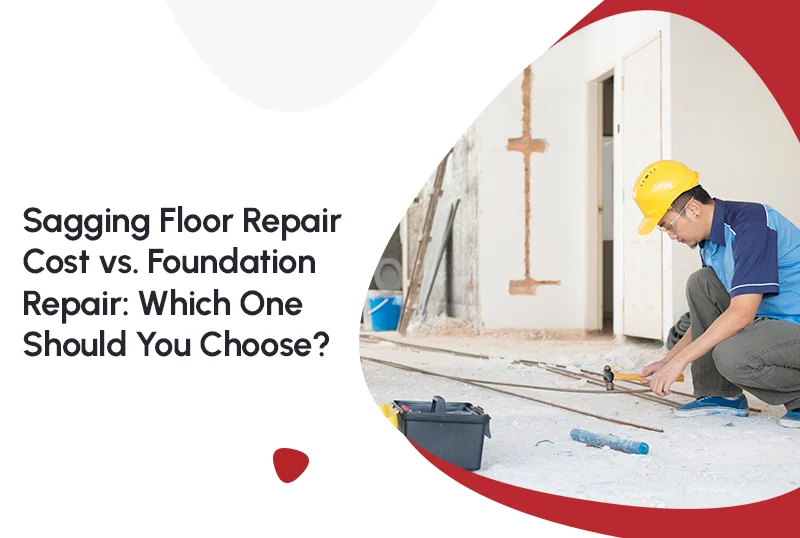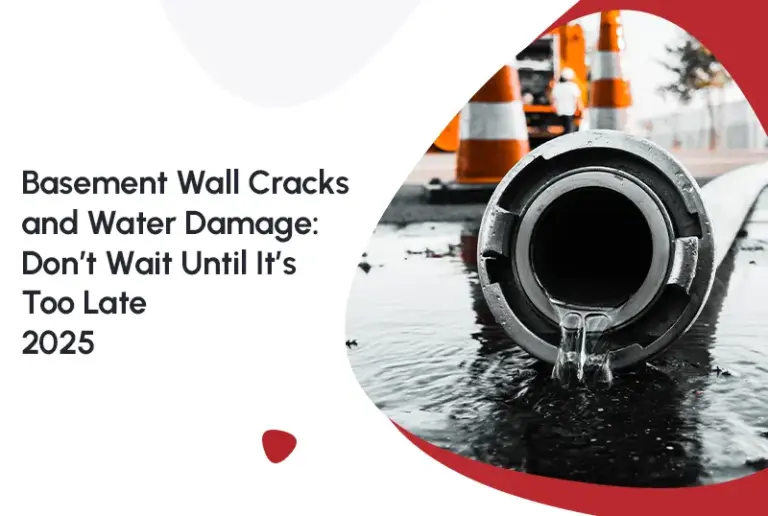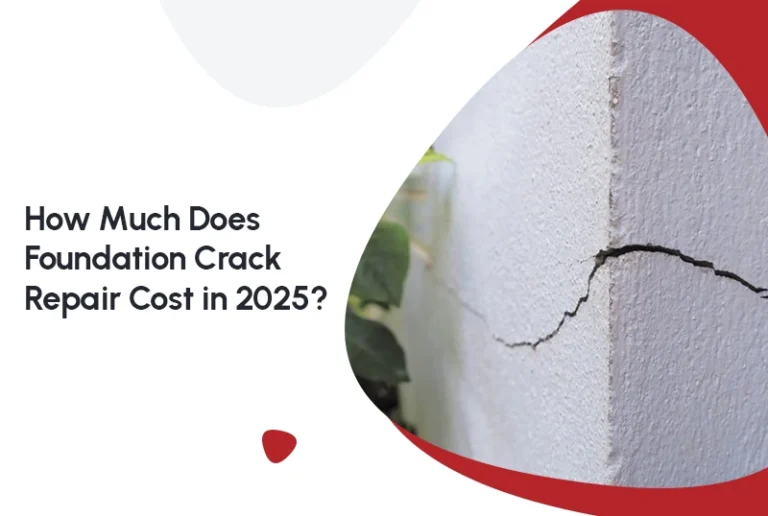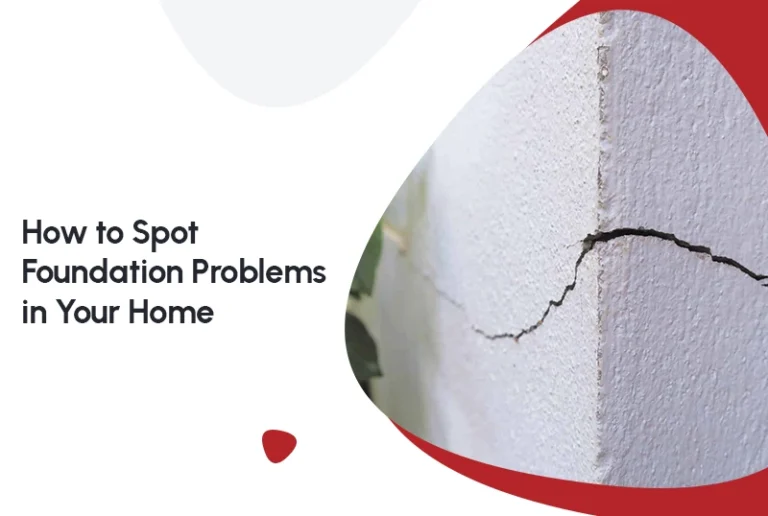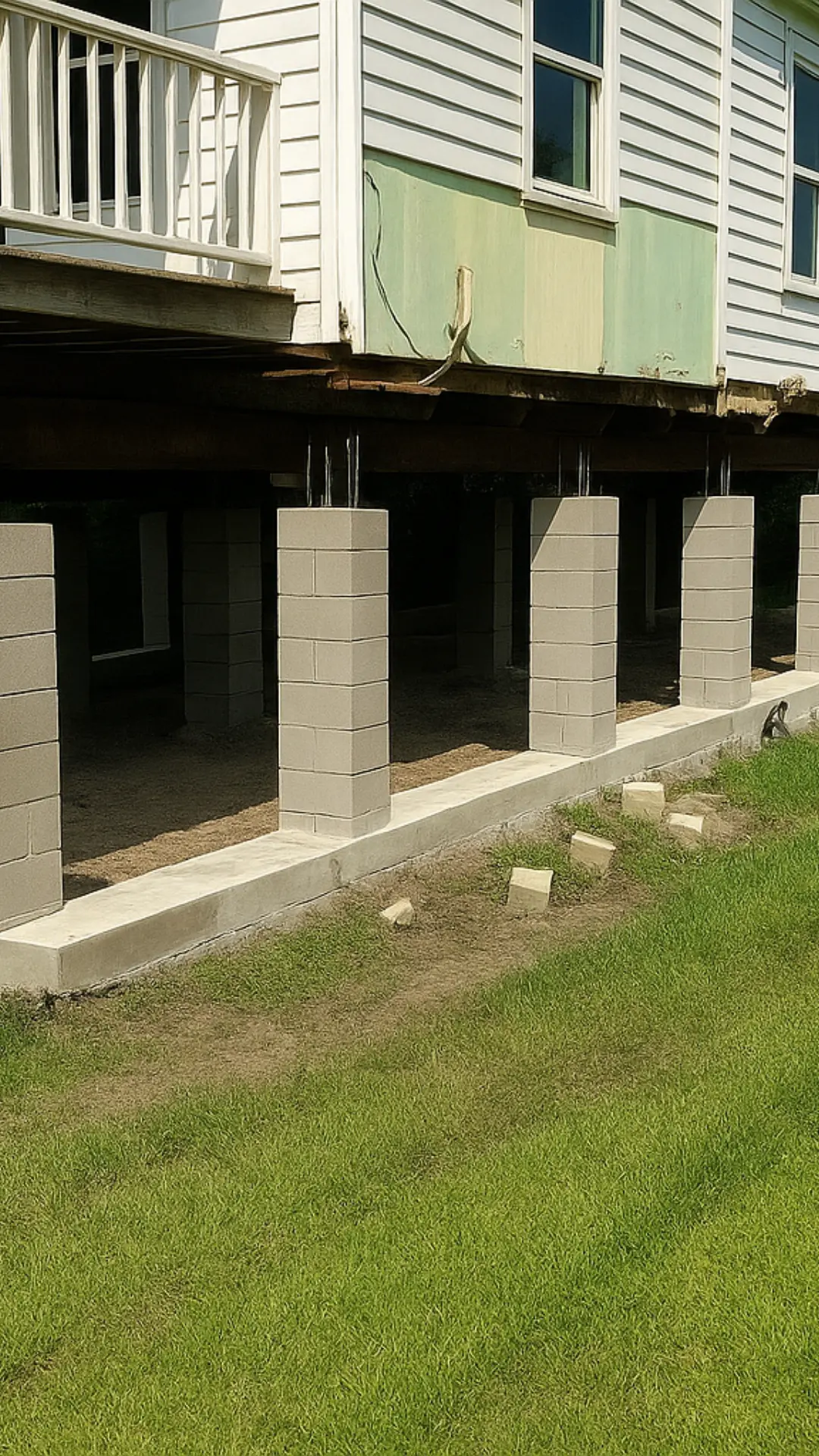So, you’ve noticed a little bounce in your step around the house—like you’re walking on a trampoline. Or maybe your floors are dipping and swaying where there should be solid ground. Whatever the case, you’re probably wondering: What the heck is going on with my floors, and how much is sagging floor repair cost going to set me back? You’ve come to the right place, my friend! We’re here to break down the difference between sagging floor repairs and foundation repairs, and help you understand the costs involved.
What’s Causing Your Floors to Sag?
Before we dive into sagging floor repair cost, let’s get to the root of the issue. Why are your floors giving you that “bouncy castle” vibe? There are a few reasons this might happen, and each one impacts the repair costs in different ways.
1. Foundation Settling: The Ground Is Moving Beneath You
Over time, the soil beneath your house might shift and, unfortunately, your house is getting caught in the middle. When the foundation settles or sinks unevenly, your floors can sag, creating the dreaded slanty floor. This can lead to higher sagging floor repair costs since addressing the foundation issue often requires more extensive work.
2. Water Damage: You’ve Got Moisture Where It Doesn’t Belong
Leaky pipes, basement flooding, or crawl spaces filled with humidity can weaken the wooden joists under your floors. Water damage can rot those beams and make your floors feel like they’re collapsing on you. Water-related sagging often requires specialized repairs, making the repair cost higher.
3. Pest Invasion: Little Invaders with Big Impact
Sometimes, the culprits are tiny but mighty like termites or carpenter ants, for instance. These little pests can chew through your wood supports, weakening the structure of your home and causing that dreaded sagging effect. Pest-related foundation issues can escalate quickly, leading to additional costs for repairs.
4. Bad Construction: “Who Built This Place?”
If your home was built with improperly sized joists or poor construction techniques, your floors might have been destined to sag from the get-go. Poor design can make your floor joists bend or bow under pressure, leading to more significant foundation issues down the line.
5. Aging Homes: Time Is Not on Your Side
Old homes are charming, but they also tend to sag. Decades of wear and tear, coupled with natural settling, can cause your floors to dip over time. The older the home, the more likely you’ll see some floor-level issues, leading to higher repair costs.
How Much Does Sagging Floor Repair Cost?
Alright, now we get to the important part: How much is this sagging floor repair cost you? Well, just like the root cause, the price of fixing sagging floors varies. There’s no one-size-fits-all answer, but we can break it down to give you a general idea.
1. Minor Fixes ($300 – $1,000)
If you’re just dealing with some small patches, like replacing a few boards or adding shims to even things out, you’re in the minor repair category. This usually costs between $300 and $1,000. It’s a quick fix, but here’s the catch—this may not address any underlying issues like a weakened foundation or moisture problems. If you don’t tackle the root cause, your floor could be back to its bouncy ways in no time!
2. Joist and Beam Repair ($1,000 – $5,000)
If your floor’s sagging due to rotted or damaged pier and beam, this repair can be more involved. Replacing or reinforcing the beams will set you back between $1,000 and $5,000, depending on the extent of the damage. It’s like fixing the skeleton of your house—important, but not cheap.
3. Crawl Space Support Jacks ($2,000 – $8,000)
If your home needs a crawl space repair, support jacks might be the answer. These adjustable steel jacks are used to lift and stabilize your sagging floors. Depending on the number of jacks needed, the sagging floor repair cost can vary between $2,000 and $8,000. Not a small investment, but it could help you avoid a much pricier foundation repair.
4. Foundation Repair ($5,000 – $15,000+)
Now, if it is caused by a foundation issue—like settling or shifting—you’re going to be looking at a bigger price tag for sagging floor repair cost. Foundation repairs can range from $5,000 to $15,000 or more, depending on the size of your home, the extent of the damage, and the repair method required (piers, slab jacking, etc.). It’s not a fun bill to face but keeping it stable is worth the investment.
Foundation Repair: Is It Really Necessary?
So, what’s the deal with foundation repair? How do you know when it’s time to make that call, or when you can just fix the sagging floor and move on? Here’s the thing: if the sagging floors are caused by a foundation issue, you’ll likely need to repair both. Let’s break down the signs that foundation repair is the true hero you need.
Signs You Need Foundation Repair:
Cracks in Walls:
If your walls are showing cracks, especially near windows or doors, it’s likely a sign of foundation movement.
Windows and Doors Won’t Close Properly:
If your doors and windows are sticking, or if you notice gaps around them, it’s a red flag.
Noticeable Shifting:
If you see your floors slanting more dramatically in some areas, or you notice sinking areas outside your home, it’s time for a foundation inspection.
Sagging Floor Repair vs. Foundation Repair: What Should You Choose?
Now for the big question: Do you fix the sagging floor, or do you go for the full-on foundation repair?
It all comes down to the “root cause”. If the floor sagging is a result of something simple like moisture damage to the joists or an old home settling naturally, you can likely get away with fixing the floors and beams. However, if your foundation is settling or shifting, you’ll need to address that first, or you’ll end up fixing the floors again later.
Did you know that foundation problems are one of the top issues in homeownership? According to a study by the National Association of Home Builders (NAHB), approximately 25% of all U.S. homes will experience some form of foundation damage during their lifetimes.
Final Thoughts
Dealing with sagging floor repair cost is no one’s idea of a fun day, but the sooner you address the issue, the less it will cost you in the long run. Whether you need a quick fix for the floor or a full-on foundation repair, knowing your options helps you make an informed decision that’s right for your home.
Get an expert opinion, take care of the problem early, and enjoy a solid (and non-bouncy) home once again!
Frequently Asked Questions
1. What Causes Sagging Floors?
Sagging floors can be caused by foundation settlement, water damage, pests, or even poor construction. Over time, these issues weaken the support structures under your home.
2. Can I Fix Sagging Floors Without Foundation Repair?
In some cases, yes! If the sagging is due to joist damage or water damage, fixing the floor may be sufficient. However, if it’s caused by foundation movement, both issues must be addressed.
3. How Do I Know If My Foundation Is the Problem?
Signs of foundation problems include large cracks in walls, sticking windows and doors, and noticeable shifting in your floors. A foundation professional can assess the situation.
4. Is Sagging Floor Repair Cost Expensive?
It can be! Minor fixes might make the sagging floor repair cost a few hundred dollars, but more extensive repairs, especially involving the foundation, can range from $2,000 to $15,000 or more, depending on the severity of the issue.
5. How Long Does It Take to Repair Sagging Floors?
Minor repairs can be done in a few days, but if foundation issues are involved, it may take several weeks for full stabilization.
6. Are Sagging Floors Dangerous?
While most sagging is gradual, if left untreated, it could eventually lead to collapse, especially in more severe cases. It’s best to address it before it gets too bad.
